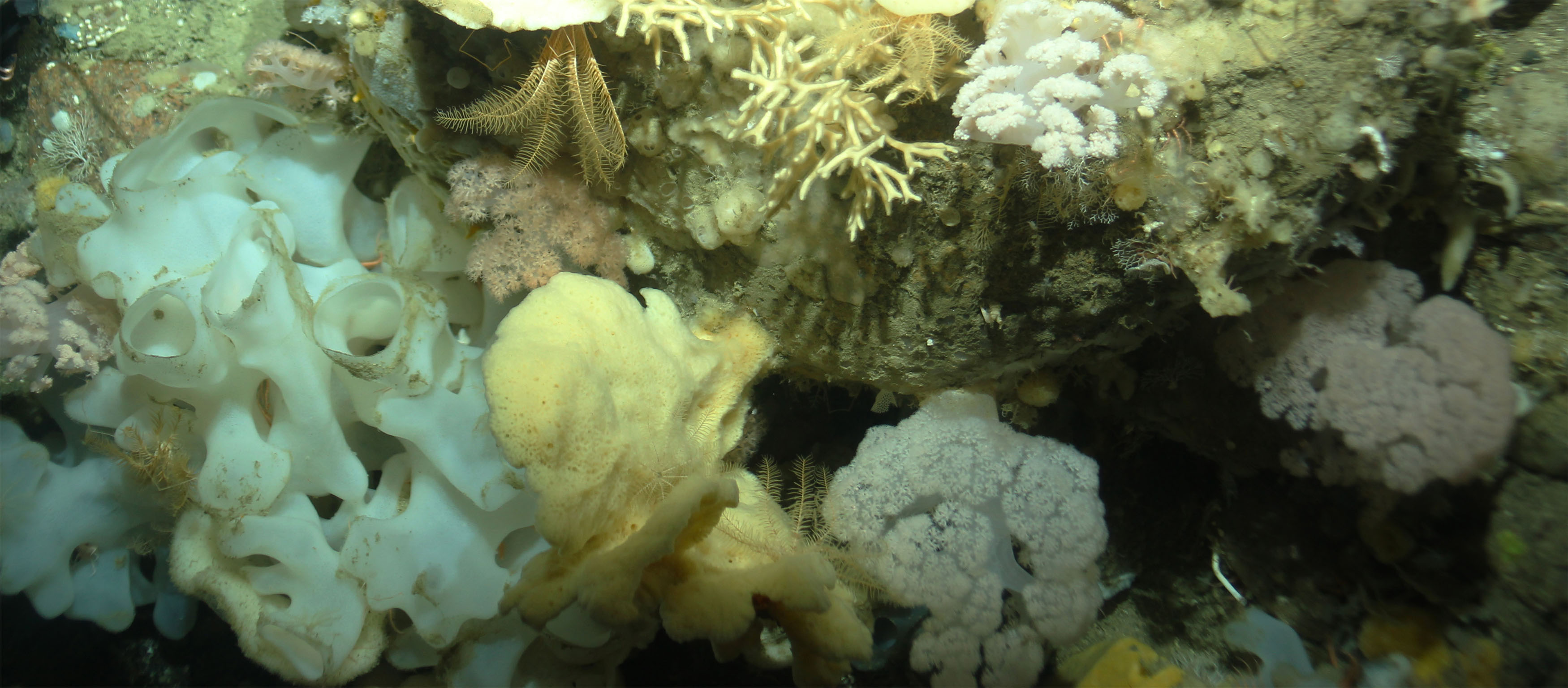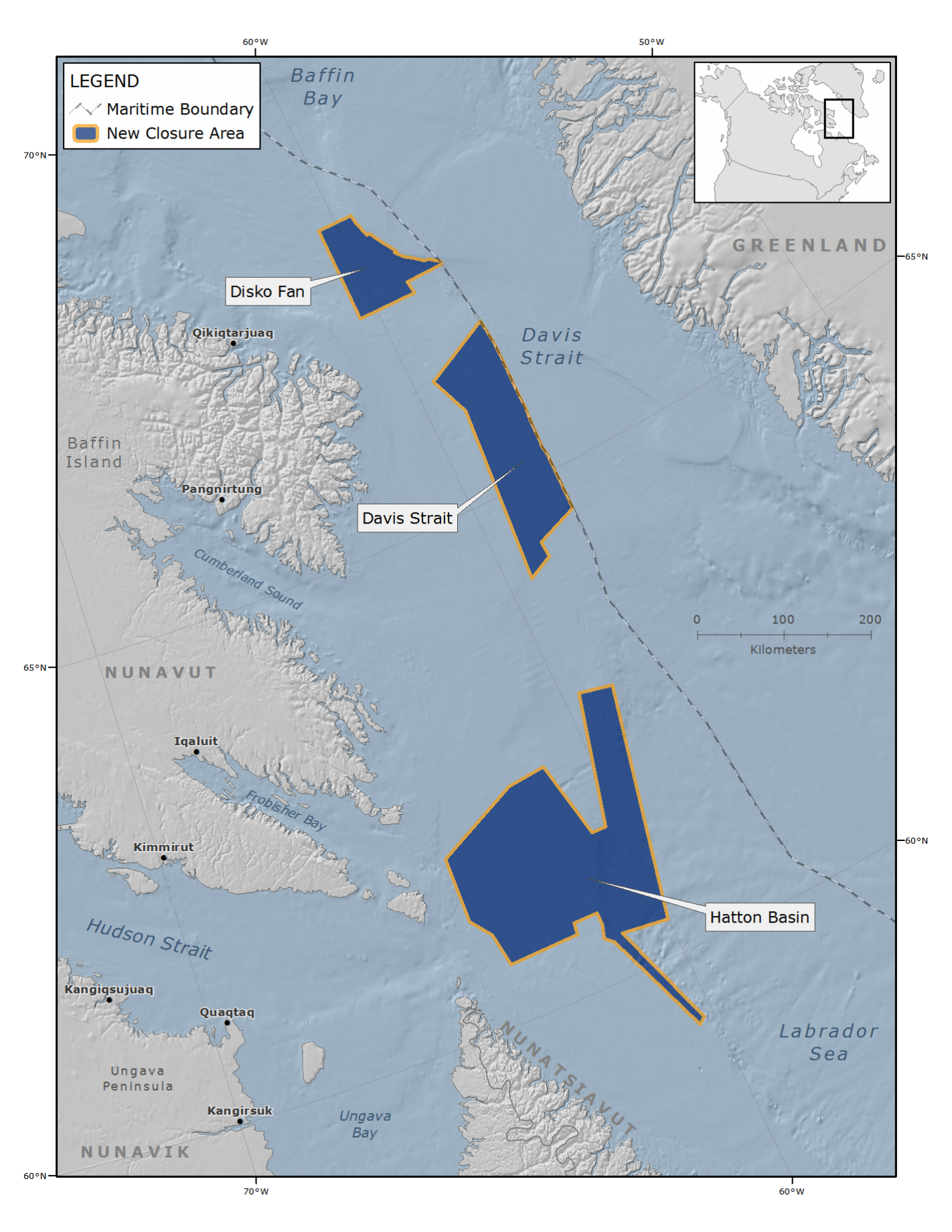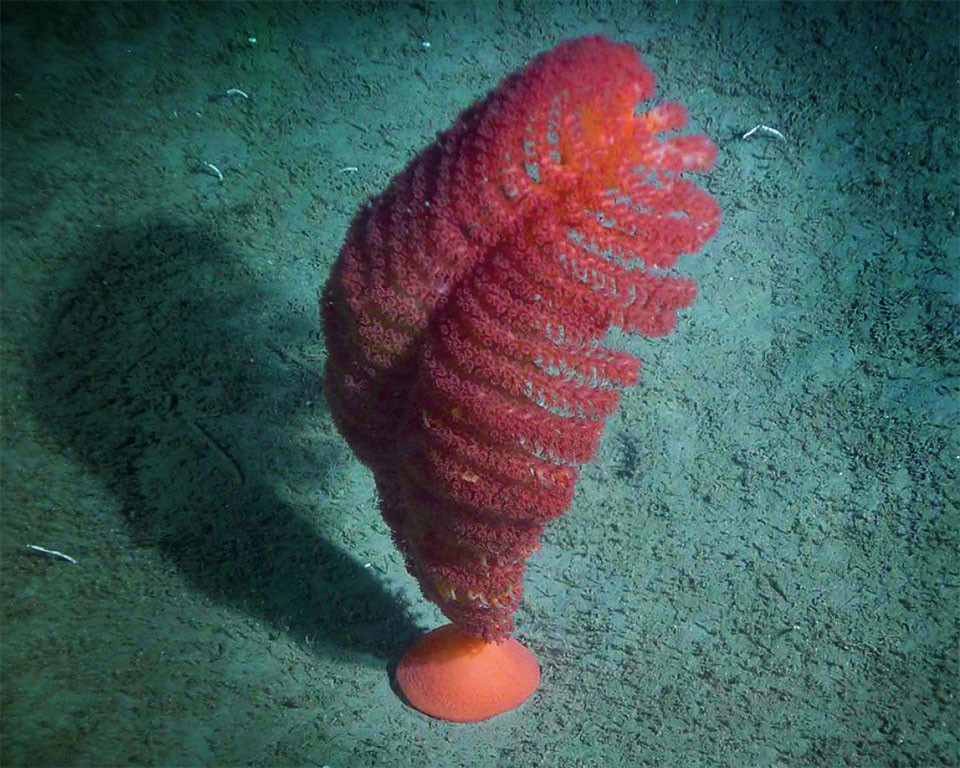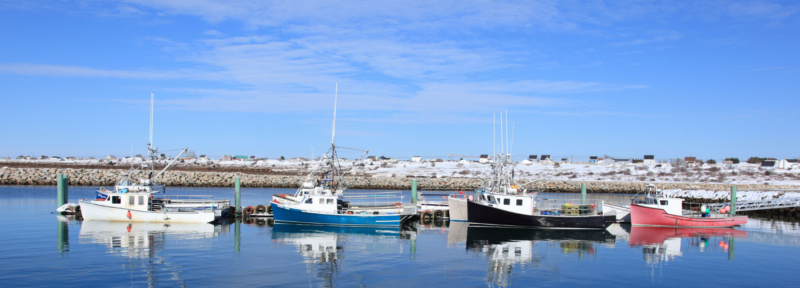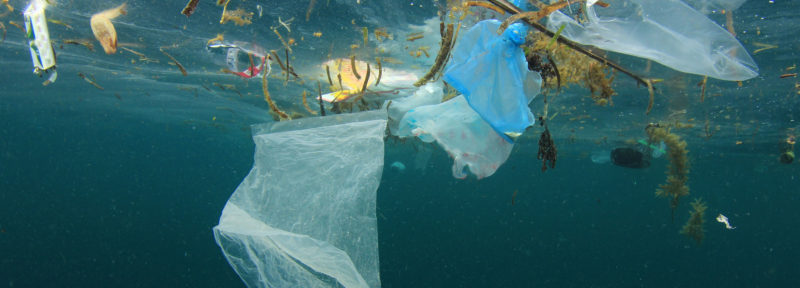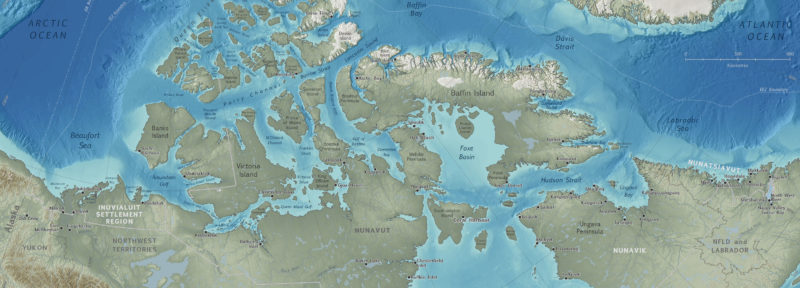A Big Step Toward Protecting the Arctic’s Cold-Water Corals
Sponges, soft corals, crinoids, bryozoans and hydroids cover the seafloor of Davis Strait in the eastern Canadian Arctic.
ᐃᓕᓴᕆᔭᐅᔪᖅ: Fisheries and Oceans Canada
When most people hear about corals, sponges and sea pens, they have visions of warm, shallow, tropical waters in places like Australia’s Great Barrier Reef. Yet these remarkable animals also flourish deep in the Arctic waters of Canada’s Baffin Bay, Davis Strait and Hudson Strait where they are as important to the marine ecosystem as iconic species like narwhal and polar bears.
Arctic corals are found in abundance along the edge of the continental shelf, in depths mostly between 400 to 800 metres, and in water temperatures just above zero degrees Celsius. While little is known about these animals, they appear to provide critical habitat to juvenile fish and shellfish, including those important to commercial fisheries. And these creatures are long-lived, with some coral aggregations thought to be as much as 2000 years old!
The most immediate threat to the corals, sponges and sea pens of the Northwest Atlantic continues to be commercial fisheries. As with many long-lived species, these animals are susceptible to damage and, once harmed, take generations to recover, if at all. Like southern coral reefs, these northern aggregations are also threatened by ocean acidification caused by increased levels of carbon dioxide.
Fishing gear, particularly drag nets called otter trawls, have had a devastating effect on coral populations in this region during the past 40 years. Trawlers have dragged over and pulled up many tonnes of these animals over the years. Of course, the damage is mostly invisible since we rarely see the bottom of the ocean in these areas. But on the few occasions when research cruises utilizing Remotely Operated Vehicles have explored this region, the damage is indisputable.
Fortunately, Canada’s Department of Fisheries and Oceans (DFO) has developed policies aimed at protecting this sensitive benthic habitat. In 2009, Canada signed the Convention on Biological Diversity with a stated objective of protecting 10 per cent of the world’s oceans. And in 2016, Prime Minister Justin Trudeau directed the Minister of Fisheries and Oceans to meet the Convention’s goal in Canadian waters by 2020.
Disko Fan, Davis Strait and Hatton Basin were established in December 2017 as Marine Protected Areas off the coasts of Nunavut, Newfoundland and Labrador.
ᐃᓕᓴᕆᔭᐅᔪᖅ: Jeremy Davies
These and other actions led to a directed effort in 2017 to identify and protect critical marine habitat in Canada’s northern waters. A process was established during meetings of the Eastern Arctic Groundfish Stakeholder Advisory Committee in Iqaluit, Nunavut and at the Northern Shrimp Advisory Meeting in St. John’s, Newfoundland. DFO, the fishing industry, conservation groups and Inuit land claim organizations worked together to identify areas to maximize protection of corals, sponges and sea pens while minimizing the impact on the commercial fishing industry. In late December 2017, Minister of Fisheries and Oceans Dominic Leblanc announced closures of three large areas totaling more than 65,000 square kilometres to all bottom-contact fishing gear.
The primary purpose of the closures is to protect deep-water, cold-water corals, sponges and sea pens. These closures achieved and, in many cases, surpassed a goal of protecting at least 70 per cent of the known aggregations. The Disko Fan, Davis Strait and Hatton Basin closures will also protect juvenile habitat for species like shrimp, Greenland halibut, redfish and rockfish. The closures also safeguard large areas that are frequented seasonally by seals, narwhal, Northern bottlenose whales and vast populations of seabirds.
We may never know the true value of protecting these areas. However, the process that created consensus among conservation groups, the fishing industry, DFO and Inuit land claims organizations to protect benthic habitat will pay biological, cultural and economic dividends for years to come.
Trevor Taylor is vice-president of conservation for Oceans North.
The "Pennatula grandis" is a sea pen species present in the deep waters (>200 metres) of the Laurentian Channel off the coast of eastern Canada.
ᐃᓕᓴᕆᔭᐅᔪᖅ: Bedford Institute of Oceanography

